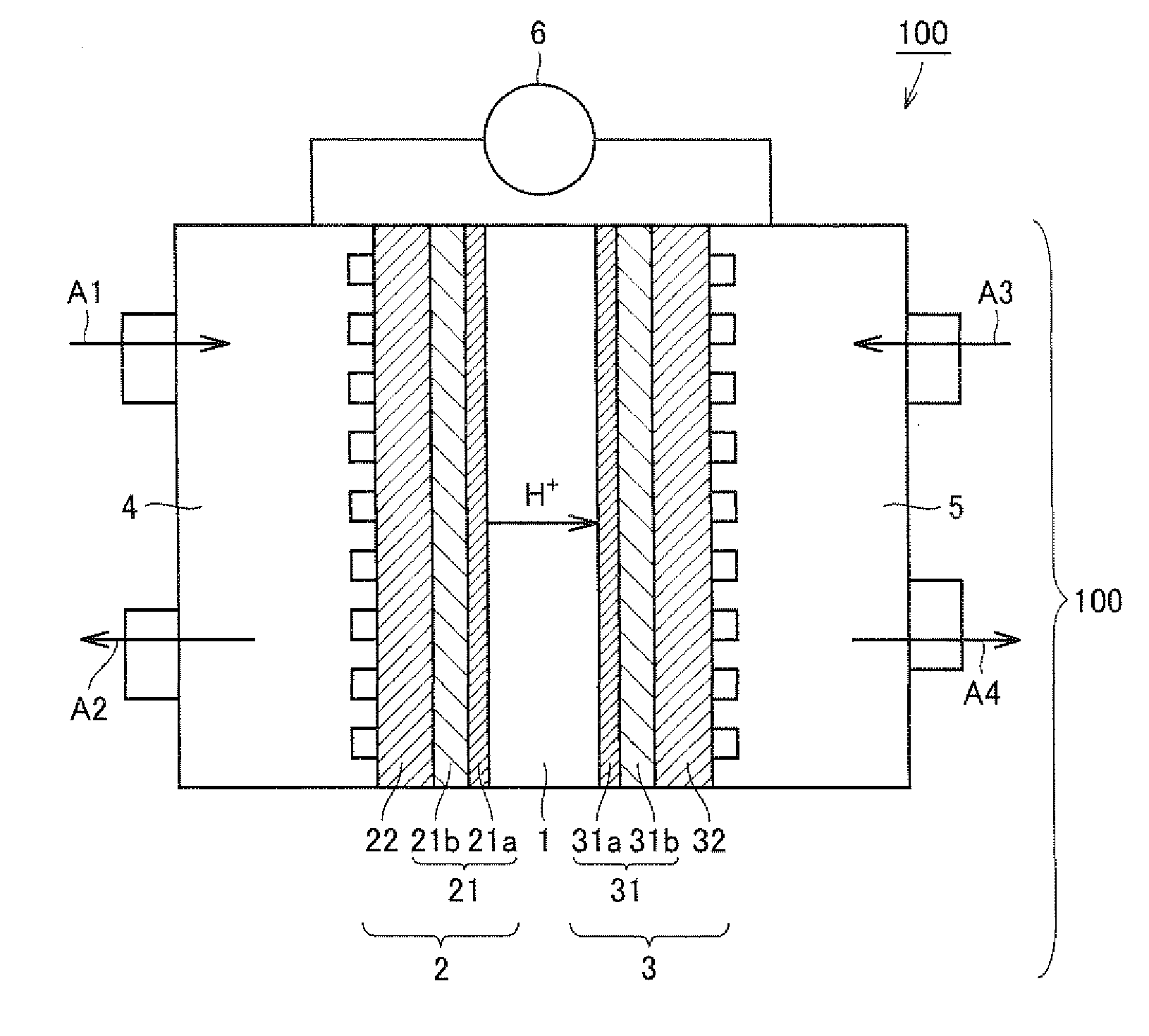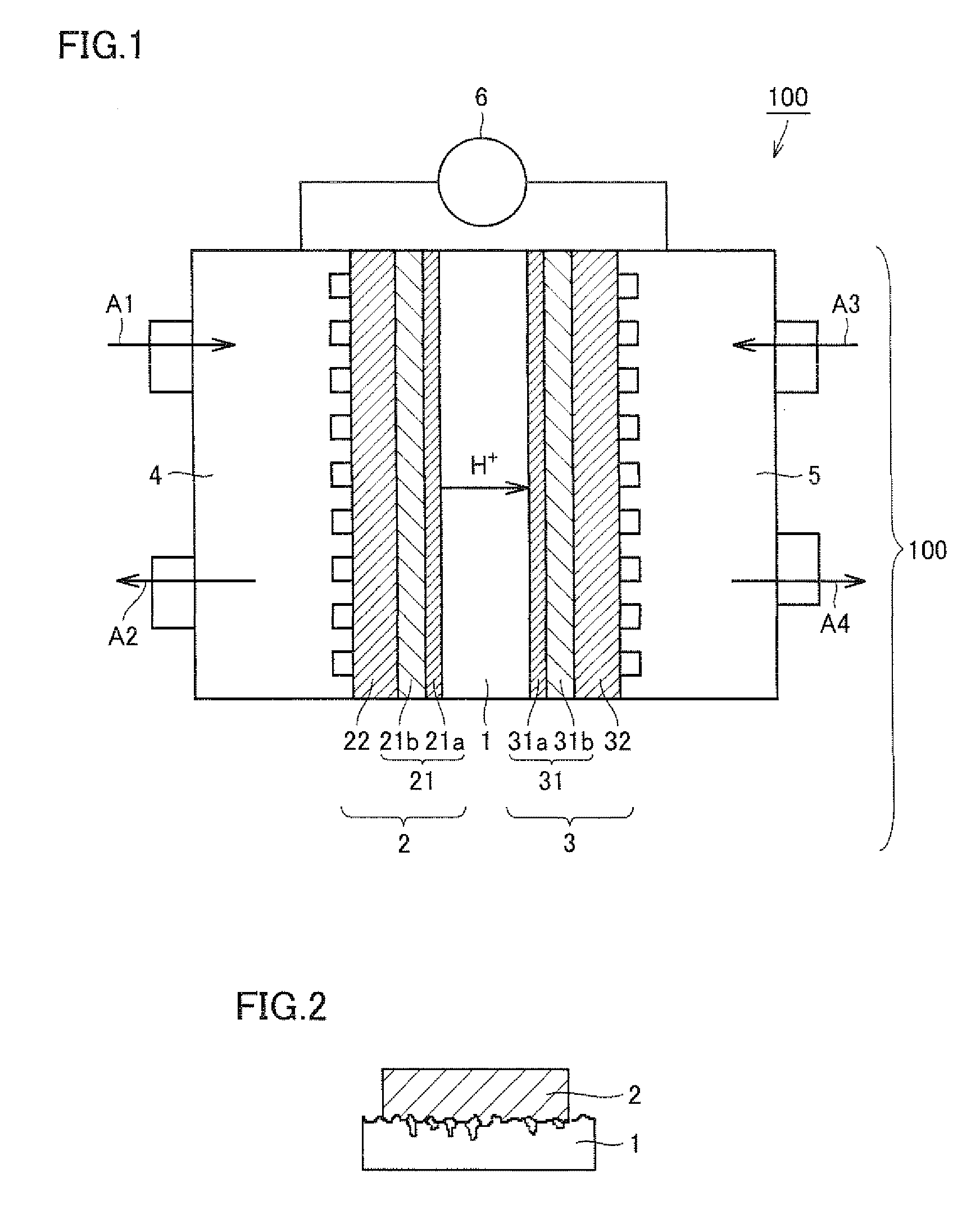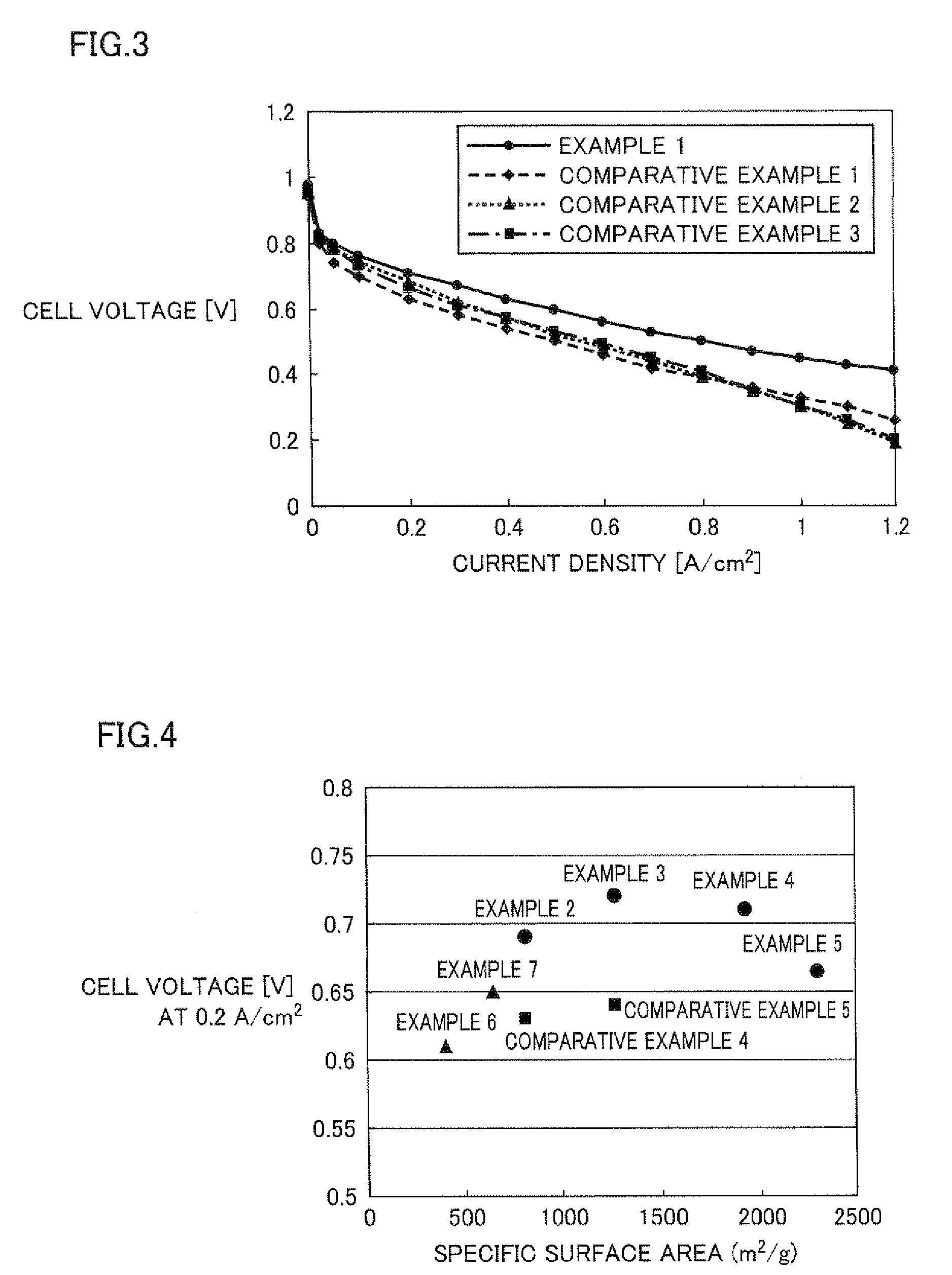Solid polyelectrolyte type fuel cell and method of producing the same
a fuel cell and polyelectrolyte technology, applied in the direction of cell components, sustainable manufacturing/processing, paper/cardboard containers, etc., can solve the problems of low catalyst activity for electrochemical reaction at the electrode, low catalyst use efficiency of catalyst carried on carbon particles, and reducing reliability, etc., to achieve excellent reliability, reduce electric interface resistance, and improve contact area and cohesion
- Summary
- Abstract
- Description
- Claims
- Application Information
AI Technical Summary
Benefits of technology
Problems solved by technology
Method used
Image
Examples
example 1
Fabrication of Polymer Solid Electrolyte Membrane Having a Surface Formed with Bumpy Face
[0095]As a polyelectrolyte membrane, Nafion (registered trademark) 117 (available from Du Pont) was used. The polyelectrolyte membrane was sandwiched by two dies having a bumpy shape of surface roughness (Ra) of about 30 μm, and pressed at 100° C. under 5 MPa for 3 minutes. As a result, the bumpy shapes of the dies were transferred on both sides of the polyelectrolyte membrane, and a bumpy face having surface roughness of about 10 μm was formed on the surface of the polyelectrolyte membrane.
[0096]Carbon black (acetylene black) having a specific surface area of 1120 m / g was suspended in a solution of 2 (4-chlorosulfonylphenyl)ethyltrichlorosilane in dichloromethane, and stirred for 2 hours at room temperature. Next, the suspension was filtered and dried under reduced pressure. In this manner, carbon particles having surfaces modified with a proton dissociative functional group were obtained.
[0097...
examples 2 to 5
[0109]Solid polyelectrolyte type fuel cells were produced in a similar manner as described in Example 1 except that carbon blacks having a specific surface area of 810 m2 / g (Example 2), 1270 m2 / g (Example 3), 1925 m2 / g (Example 4), and 2300 m2 / g (Example 5), respectively were used as carbon black.
examples 6 and 7
[0110]Solid polyelectrolyte type fuel cells were produced in a similar manner as described in Example 1 except that carbon blacks having a specific surface area of 396 m2 / g (Example 6), and 643 m2 / g (Example 7), respectively were used as carbon black.
PUM
| Property | Measurement | Unit |
|---|---|---|
| specific surface area | aaaaa | aaaaa |
| roughness | aaaaa | aaaaa |
| shape | aaaaa | aaaaa |
Abstract
Description
Claims
Application Information
 Login to View More
Login to View More - R&D
- Intellectual Property
- Life Sciences
- Materials
- Tech Scout
- Unparalleled Data Quality
- Higher Quality Content
- 60% Fewer Hallucinations
Browse by: Latest US Patents, China's latest patents, Technical Efficacy Thesaurus, Application Domain, Technology Topic, Popular Technical Reports.
© 2025 PatSnap. All rights reserved.Legal|Privacy policy|Modern Slavery Act Transparency Statement|Sitemap|About US| Contact US: help@patsnap.com



